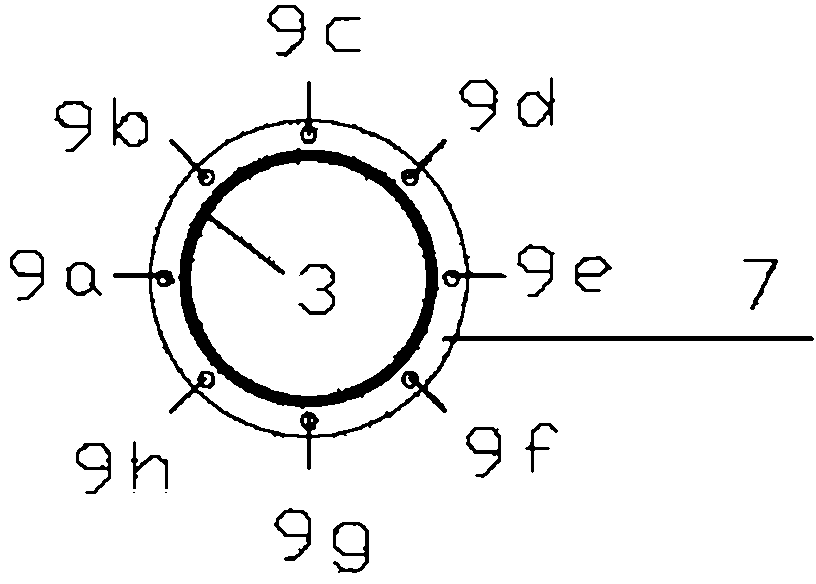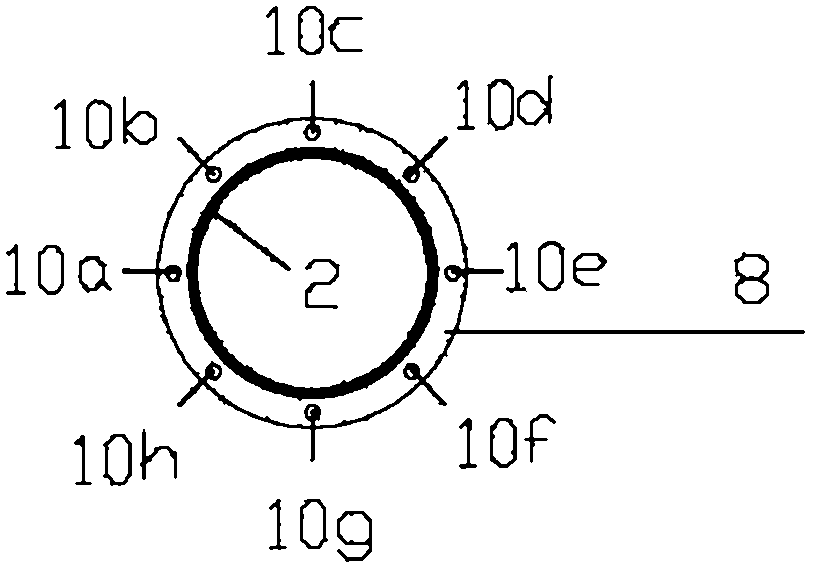River and lake bottom sludge pollutant flux test method and device based on diffusion theory
A technology of diffusion theory and test method, which is applied to the experimental device of the test method and the field of testing the flux of sediment pollutants in rivers and lakes, can solve the problems of cumbersome operation, large calculation error, wall effect, etc. Applicability and easy operation
- Summary
- Abstract
- Description
- Claims
- Application Information
AI Technical Summary
Problems solved by technology
Method used
Image
Examples
Embodiment 1
[0079] A method for testing the flux of river and lake sediment pollutants based on diffusion theory: the steps are:
[0080] A. Sediment sample collection and processing: 1# sampling point is located in Changzhou, Jiangsu, Beijing-Hangzhou Canal, coordinates 31°31′40.33″, 120°0′36.98″; 2# sampling point is located in Gehu Lake in Jiangsu, coordinates 31° 34'58.22", 119°53'56.87". Use the KH0201 Peterson mud sampler to collect 2 kg of sediment samples at each sampling point. After removing debris such as gravel, shells, and animal and plant residues, put them into polyvinyl chloride bags and store them away from light.
[0081] B. Sample loading: remove the fixing bolts of the flange, remove the base, put the bottom mud into the bottom, carefully smooth the mud surface, make the mud surface level, the thickness of the bottom mud is about 5cm, and then put the upper column and the base with The fixing bolts are tightly connected;
[0082] C. Water injection: In the case that ...
PUM
| Property | Measurement | Unit |
|---|---|---|
| thickness | aaaaa | aaaaa |
| diameter | aaaaa | aaaaa |
Abstract
Description
Claims
Application Information
 Login to View More
Login to View More - R&D
- Intellectual Property
- Life Sciences
- Materials
- Tech Scout
- Unparalleled Data Quality
- Higher Quality Content
- 60% Fewer Hallucinations
Browse by: Latest US Patents, China's latest patents, Technical Efficacy Thesaurus, Application Domain, Technology Topic, Popular Technical Reports.
© 2025 PatSnap. All rights reserved.Legal|Privacy policy|Modern Slavery Act Transparency Statement|Sitemap|About US| Contact US: help@patsnap.com



